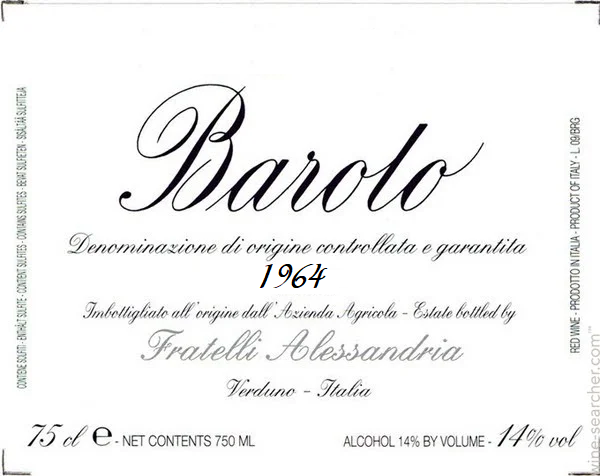1964 Barolo Red Blend
The Fratelli Alessandria Verduno Barolo from the 1964 vintage is a captivating red blend that embodies the essence of the Barolo region. Its deep ruby color hints at the complex flavors that await. The wine showcases a remarkable balance, presenting a medium to full-bodied profile with bright acidity that invigorates the palate. The tannins are notable yet well-integrated, providing a firm structure that supports its rich character. The fruit intensity is prominent, evoking luscious dark fruits intertwined with earthy undertones and subtle floral notes. There's a defined dryness that complements its full-bodied nature, making it a splendid choice for savoring alongside hearty dishes. This wine not only reflects the mastery of its makers but also celebrates the unique terroir of Barolo, offering a delightful experience for wine enthusiasts.
The Fratelli Alessandria Verduno Barolo from the 1964 vintage is a captivating red blend that embodies the essence of the Barolo region. Its deep ruby color hints at the complex flavors that await. The wine showcases a remarkable balance, presenting a medium to full-bodied profile with bright acidity that invigorates the palate. The tannins are notable yet well-integrated, providing a firm structure that supports its rich character. The fruit intensity is prominent, evoking luscious dark fruits intertwined with earthy undertones and subtle floral notes. There's a defined dryness that complements its full-bodied nature, making it a splendid choice for savoring alongside hearty dishes. This wine not only reflects the mastery of its makers but also celebrates the unique terroir of Barolo, offering a delightful experience for wine enthusiasts.




